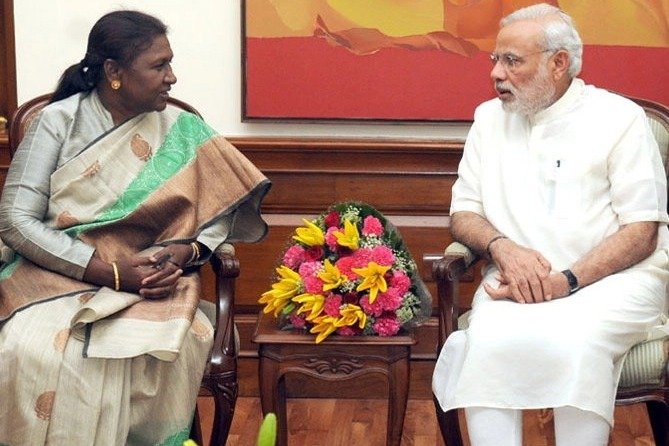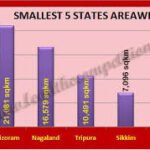From Tribal Hinterlands to Raisina Hills: The Inspiring Journey of Draupadi Murmu
Draupadi Murmu, the current Governor of Jharkhand, has a remarkable story that is both inspiring and unique. Born on June 20, 1958, in a small tribal village in Odisha, Murmu’s journey to Raisina Hills is an epitome of hard work, perseverance, and determination.
Murmu hails from a humble background. She lost her father at a young age and had to face numerous challenges throughout her life. Despite the hardships, she never gave up and continued to work hard towards her goals.
After completing her education, Murmu became a teacher and started working in a government school. She was always passionate about social work and actively participated in various social causes, including women’s empowerment, education, and health.
In 2005, Murmu joined the Jharkhand Mukti Morcha (JMM), a regional political party, and soon rose through the ranks to become the president of the party’s women’s wing. She played a pivotal role in organizing protests against the displacement of tribals and fought for their rights.
In 2014, Murmu was elected to the Jharkhand Legislative Assembly from the reserved seat of Dumka. She was later appointed as the Minister of Welfare, Women and Child Development in the Hemant Soren-led government.
In 2019, Murmu was appointed as the Governor of Jharkhand, becoming the first tribal woman to hold the post. Her appointment was hailed as a landmark moment for women and tribal communities in India.

Why this News is important:
- Inspiring Story of an Accomplished Woman The story of Draupadi Murmu is a testimony to the power of hard work and determination. Her journey from a small tribal village to the Raisina Hills is an inspiration for millions of women and girls who aspire to achieve great things in life.
- First Tribal Woman Governor Murmu’s appointment as the first tribal woman governor is a significant milestone for the tribal community in India. It highlights the need for greater representation of marginalized communities in positions of power and authority.
Historical Context:
India has a long history of tribal communities, who have faced discrimination and neglect for centuries. Despite constitutional safeguards and affirmative action, tribals continue to be one of the most marginalized and disadvantaged groups in the country.
The appointment of Draupadi Murmu as the Governor of Jharkhand is a positive step towards greater representation of tribal communities in positions of power. It is also a recognition of the contributions made by tribals to the social, cultural, and economic development of the country.
Key Takeaways from “From Tribal Hinterlands to Raisina Hills: The Inspiring Journey of Draupadi Murmu”
| Sr. No. | Key Takeaway |
|---|---|
| 1. | Draupadi Murmu is an accomplished woman who has overcome numerous challenges in her life. |
| 2. | Murmu’s appointment as the first tribal woman governor is a significant milestone for the tribal community in India. |
| 3. | Her journey is an inspiration for millions of women and girls who aspire to achieve great things in life. |
| 4. | Murmu has been actively involved in various social causes, including women’s empowerment, education, and health. |
| 5. | The appointment of Murmu highlights the need for greater representation of marginalized communities in positions of power and authority. |
Important FAQs for Students from this News
Q: Who is Draupadi Murmu?
A: Draupadi Murmu is an Indian politician and the current Governor of Jharkhand.
Q: What is the significance of her being the first woman tribal governor?
A: Draupadi Murmu’s appointment as the first woman tribal governor is significant as it highlights the representation of tribal communities in the highest positions of power in the country.
Q: Which state did she represent as a Member of Parliament before becoming the Governor of Jharkhand?
A: Draupadi Murmu represented the Mayurbhanj constituency in the state of Odisha as a Member of Parliament.
Q: What are some of the challenges faced by tribal communities in India?
A: Some of the challenges faced by tribal communities in India include poverty, lack of access to education and healthcare, discrimination, and displacement due to development projects.
Q: How can the representation of tribal communities in positions of power be improved in India?
A: The representation of tribal communities in positions of power can be improved in India through affirmative action policies such as reservations in educational institutions and government jobs, as well as by raising awareness about the importance of diversity and representation in governance.
Some Important Current Affairs Links


















 Exciting News!
Exciting News!  Join Our Telegram Channel Now!
Join Our Telegram Channel Now!
 Join our Telegram channel for a thrilling adventure into the world of daily current affairs.
Join our Telegram channel for a thrilling adventure into the world of daily current affairs. 
 Don’t miss out on the latest updates and insights! Click to join now and be part of the knowledge revolution!
Don’t miss out on the latest updates and insights! Click to join now and be part of the knowledge revolution! 
